Effective Ways to Combat Humidity: A Concern for Many Households Every Rainy Season The methods for addressing sweating floors or effective dehumidification at home listed below will help you find free, cost-effective ways to combat humidity.
Simple, Affordable Ways to Combat Humidity
- Signs of Visible Humidity in Your Home
- Simple Tips to Combat Humidity
- Always Keep Doors Closed
- Use a Dry Mop for Cleaning
- Turn on the Air Conditioner in Dry Mode
- Utilize Dehumidifying Materials
- Prevent Mold in Wardrobes and Corners
- Use Hot Water for Cleaning and Disinfection
- Keep Electronics in Standby Mode
- Use Essential Oils for Freshness
- Use Newspapers to Combat Humidity
- Use Charcoal to Absorb Moisture
- Use Quicklime to Keep Your Home Dry
- Limit Laundry Drying Indoors
- Use Candles Indoors
- Seal Any Gaps in Your Home
- Common Mistakes When Dealing with Humidity
- When Does Humidity Occur and How Long Does It Last?
- Important Notes for Humid Weather
Humid weather can cause floors to “sweat,” creating discomfort and significantly impacting your family’s daily life. With simple, affordable tips to combat humidity listed below, your home can stay dry and clean.
Signs of Visible Humidity in Your Home
- Ceilings, walls, and floors are “sweating.” Water condenses on the ceiling, dripping like a leak, and the floors become slippery and damp.
- Clothes take a long time to dry, and mold appears quickly.
- Touching fabric items like blankets, sheets, or pillows feels damp and not dry.
- Electronics like computers and TVs won’t power on or malfunction.
This prolonged condition can lead to decay, discoloration, and corrosion of materials, harming electronic devices, diminishing the lifespan of the building, and detracting from the home’s aesthetic appeal.
Simple Tips to Combat Humidity
Always Keep Doors Closed
In humid weather, the damp floors and stagnant air often lead people to open windows and doors to let in fresh air, hoping it will dry the floors. However, this is a harmful mistake; the high-humidity winds entering your home will only increase moisture. It is best to minimize door openings, turn on the air conditioner, and avoid using fans to keep your home drier.
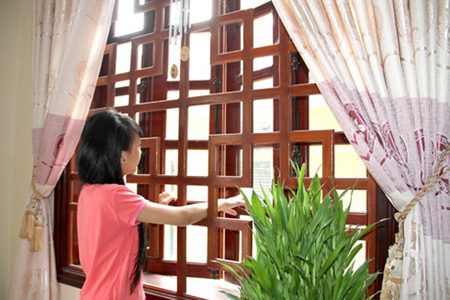
Keep doors closed to reduce humidity.
Use a Dry Mop for Cleaning
To combat humidity, many homemakers frequently clean to keep their homes dry. However, even with hot water, it is difficult to reduce dampness. The best approach is to use a clean, dry mop to wipe away moisture from the floors.
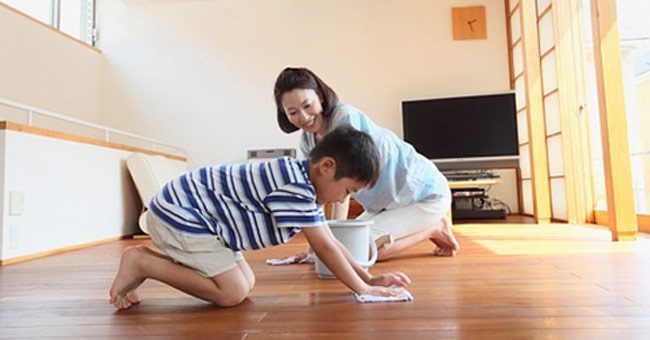
Turn on the Air Conditioner in Dry Mode
If your home has a two-way air conditioner, turn it on in dry mode. This is a great way to absorb moisture and circulate air, ensuring the health of all family members, especially in homes with small children.
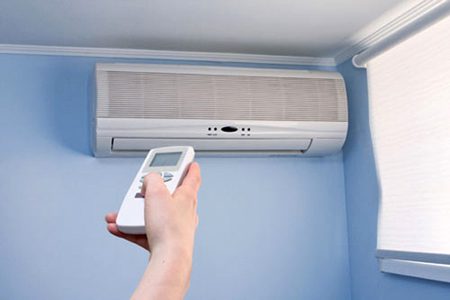
Air conditioner effectively absorbs moisture.
Utilize Dehumidifying Materials
There are many types of dehumidifiers available on the market. If possible, consider purchasing one; it may consume a bit more electricity but will help keep your home dry and clean. If buying a machine is not feasible, placing a small bowl of charcoal in the room or under the sofa can help absorb moisture effectively.
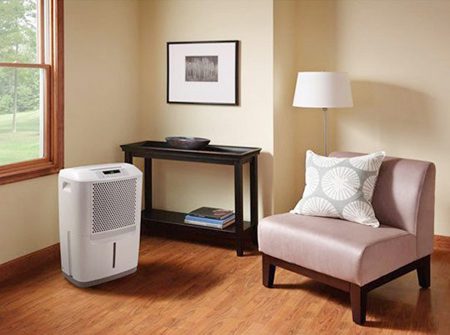
Dehumidifiers are effective in combating humidity.
For shared spaces in your home, such as doorways, sinks, and bathrooms, in addition to using mats, you can also place a few sheets of newspaper to help absorb moisture quickly. This is a practical solution since not every home has enough mats to replace during prolonged humid days.
Prevent Mold in Wardrobes and Corners
For wardrobes and corners of the house that are particularly damp, use moisture-absorbing boxes to reduce mold. These moisture-absorbing boxes are widely available at large supermarkets and Japanese or Korean goods stores for about 40,000 VND per box, lasting approximately 2 to 4 weeks.
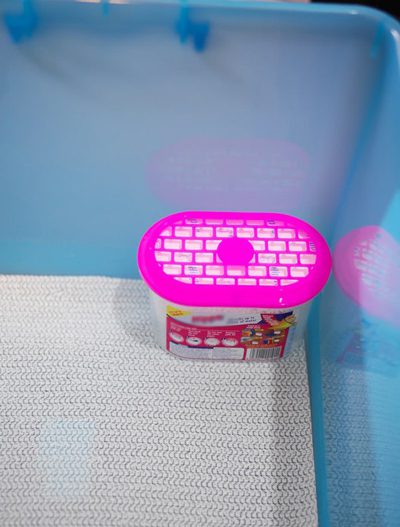
Moisture-absorbing boxes suitable for use in wardrobes and corners.
Use Hot Water for Cleaning and Disinfection
Household items like bamboo or wooden chopsticks and ladles are prone to mold in humid days. Therefore, after washing dishes each day, rinse them with hot water as a final step, then let them dry or arrange them with space in between to ensure cleanliness. If you have a dish dryer, don’t forget to use it.
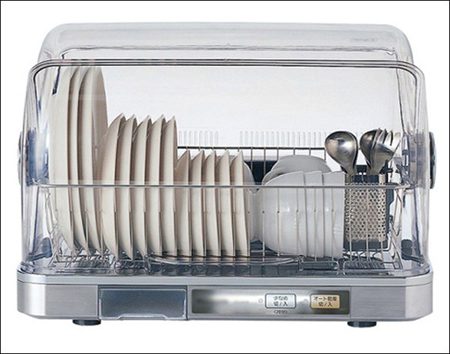
Use hot water for rinsing or a dish dryer to prevent mold and ensure cleanliness.
Keep Electronics in Standby Mode
Turn on electronic devices and keep them in standby mode to minimize the impact of moisture on items like TVs, DVD players, and computers.
Use Essential Oils for Freshness
To avoid unpleasant odors caused by humidity, you can use essential oils in the corners of your home. It is best to choose light scents like lavender or lemon to create a pleasant aroma.

Light essential oils help keep the home smelling fresh and pleasant.
Use Newspapers to Combat Humidity
In areas frequently exposed to water, such as doorways, sinks, and bathrooms, you should use mats while also placing some newspapers to help absorb moisture better. Newspapers can absorb moisture quickly but are especially effective if your mats are still damp during prolonged humid days.
Use Charcoal to Absorb Moisture
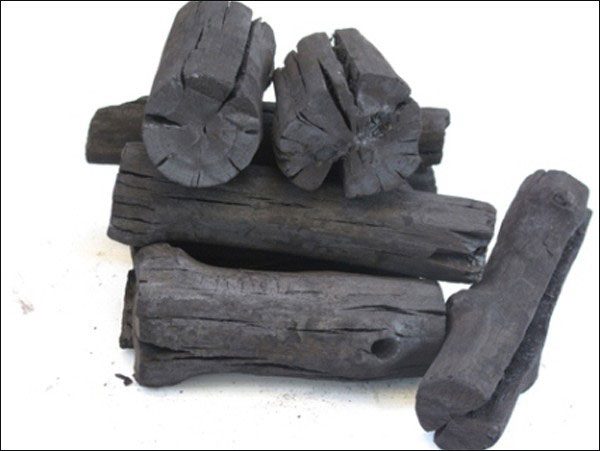
If you cannot afford a dehumidifier, you can use charcoal placed in the room or under the sofa to effectively absorb moisture.
However, ensure that the charcoal is only placed in the room and never burned. For homes with active children, to prevent them from playing with it, store the charcoal under beds, sofas, or in less accessible areas.
Use Quicklime to Keep Your Home Dry
During peak humidity days, you can buy 10-15 kg of quicklime, place it in cardboard or wooden boxes, and position them in corners of the room, under tables, or chairs. When the weather is humid, simply open the box lid to help absorb moisture significantly. This is a straightforward method that is easy to implement, but exercise caution if there are children in the home.
Limit Washing Clothes
During humid days, you should limit washing clothes if they are not too dirty. After washing, hanging them out to dry may still leave them damp and could lead to unpleasant odors. If you must wash, prioritize using a washing machine on the extra dry spin setting. Fabric softener is also a lifesaver you should use during this humid weather.
Light Candles Indoors
Lighting candles is an interesting solution you should try. Using scented candles not only reduces humidity and unpleasant smells in your home but also adds a romantic touch. This method is often overlooked but can be very effective. It helps keep your room dry and improves your mood.
Seal Gaps in Your Home
It’s important to not only keep your doors and windows closed but also to seal any gaps in your home. This will help prevent humid air from entering and causing discomfort.
Common Mistakes When Dealing with Humidity
Humidity can be uncomfortable and affects daily life significantly. As a result, everyone looks for ways to combat it. However, trying too hard can sometimes backfire due to the following common mistakes:
- Opening doors wide during humid weather: You may want to open the windows to dry the damp floors, but this is a mistake. As mentioned, during humid seasons, the outside air is high in moisture, and opening windows allows more humid air to enter your home.
- Sealing all doors and using fans to dry
- Frequent cleaning: Many families believe that mopping the floors with water will make them cleaner, but this is a misconception. Mopping with water can make the floor slippery, and the water left behind can increase indoor humidity.
- Constantly unplugging electronic devices: Many people habitually unplug electronic devices after use due to fears of damage from humidity. However, this is a misconception as frequently unplugging devices can reduce their lifespan. Instead of continuously unplugging, switch devices to standby mode to minimize moisture exposure to electronics like TVs, computers, and DVD players.
When Does Humidity Occur and How Long Does It Last?
Humid weather typically occurs in the northern region, particularly in Hanoi, from February to April each year. Each humid period lasts a few days but can sometimes extend over several weeks. It usually only ends or changes when the northeast monsoon arrives.
The peak of humidity usually occurs in March, with an average of 4 to 5 humid spells of varying lengths throughout the month.
Causes of Humidity
- The main cause of this dampness is that the floor temperature is lower than the air temperature. As the air contains a lot of moisture, it condenses into dew, causing water droplets to form on the floor upon contact. Unlike soil, flooring materials cannot absorb moisture and have poor heat conduction, causing the air close to the surface to cool to the dew point.
- Prolonged cold and dry weather can lower the temperature of the floor.
- The influence of humid winds brings moisture from the sea inland. Consequently, this air has relatively high humidity, while the floor temperature remains low and has not yet adjusted to the air temperature.
Important Considerations During Humid Weather
Due to prolonged cold and dry weather, the floor temperature drops significantly. When the humid winds carry moist air from the sea inland, this warm air has a relatively high dew point, while the floor temperature remains lower than the dew point of the air, leading to the formation of condensation.
Currently, there is no effective method to completely eliminate humidity. Therefore, with the small tips provided above, we hope it helps keep your home drier and more comfortable.


















































